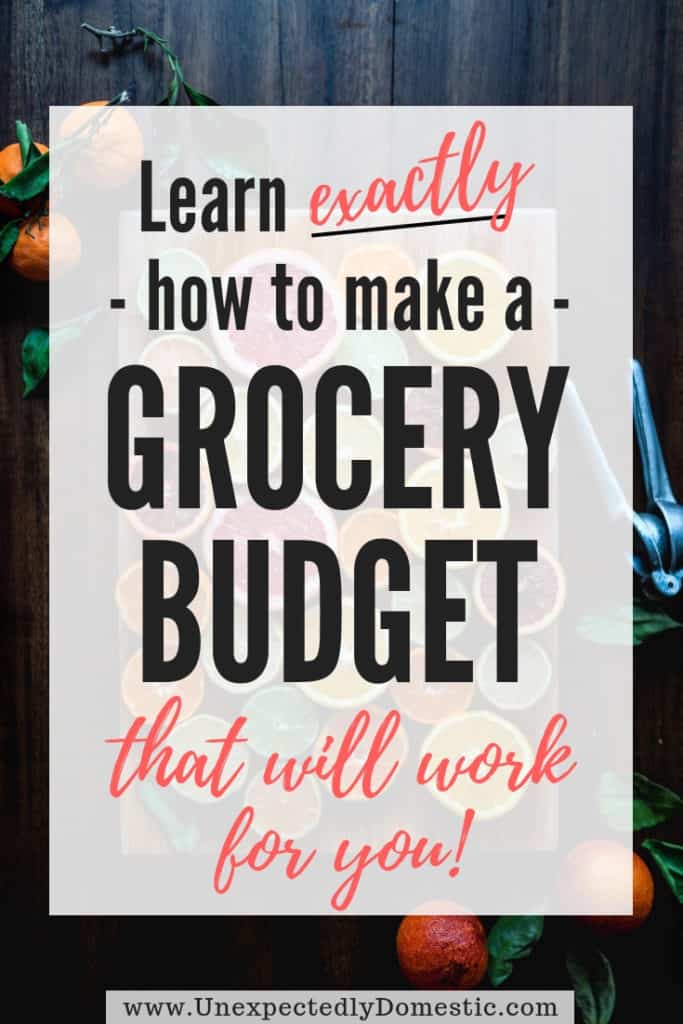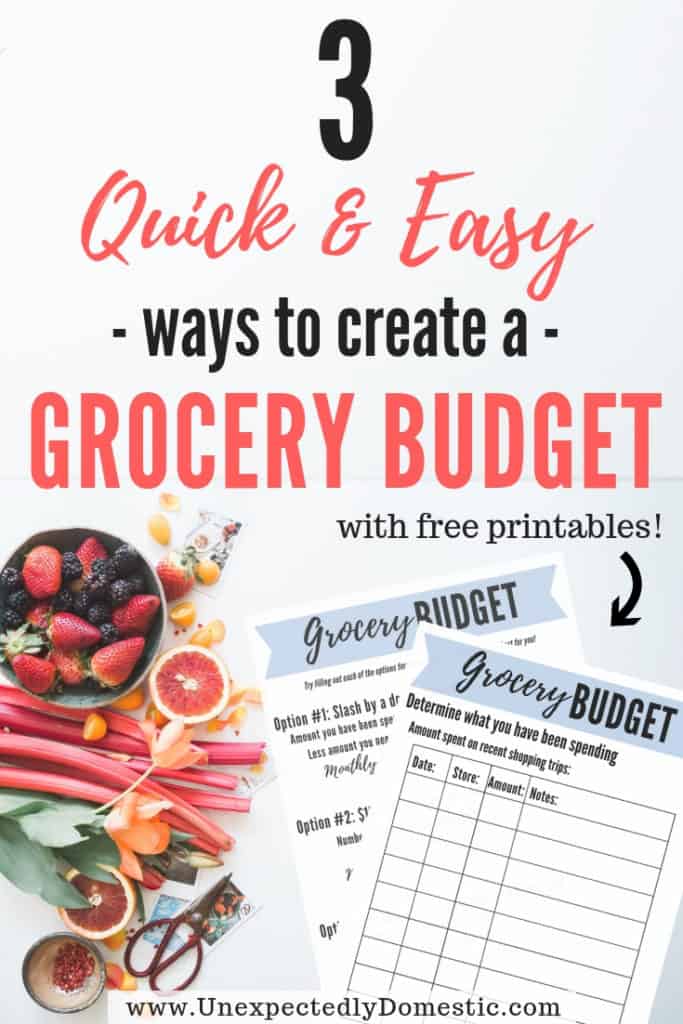The Quickest and Easiest Way to Create a Grocery Budget (and stick to it!)
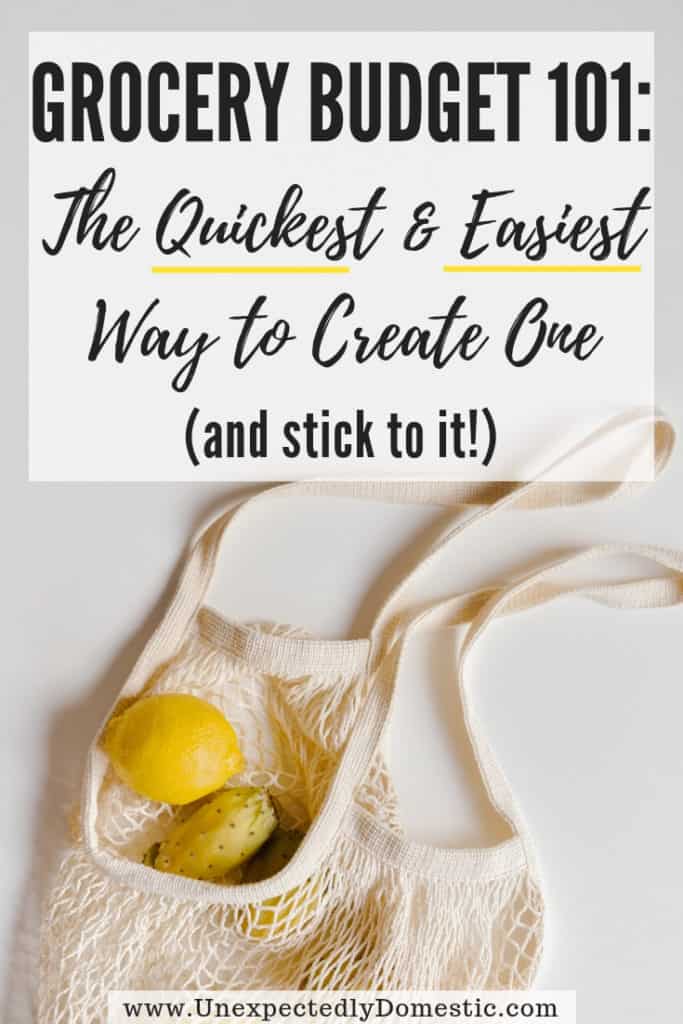
Are you spending too much money on food? Have you thought about budgeting for food, but decided it’s too complicated? Well, you’ve come to the right place! If you’ve wondered what your grocery budget should be, or even how to create a grocery budget, just keep reading.
You May Also Like:
- 5 Super Easy Ways to Save Money on Groceries (without using coupons!)
- How I Saved Series: My weekly shopping trips to demonstrate a real-life grocery budget in action
- Budgeting for Beginners: A Step by Step Guide for Getting Started
If creating a grocery budget seems like a difficult, unnecessary hassle, consider this:
You’re selling yourself short.
Either you think:
- You’re not smart or savvy enough to create or stick to a budget.
- Your money isn’t worth keeping track of.
- It won’t make that big of a difference.
Counterpoint:
- These grocery budget methods use simple, 3rd grade math. You got this.
- You work way too hard for your money for it to keep disappearing on you. Isn’t your time and energy worth you being intentional about the true cost of it?
- If you’ve ever tracked your spending, you know that food is one of your biggest expenditures. Fortunately, it’s also one of the easiest to control.
I even created grocery budget worksheets to make creating your new budget even easier! Sign up below for instant access!
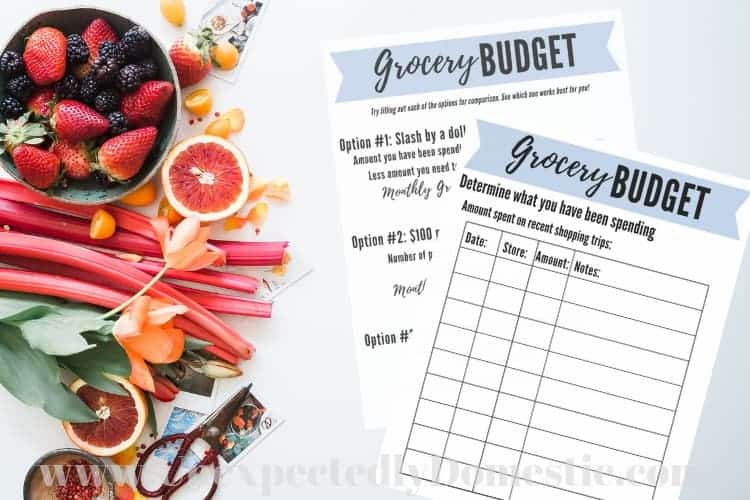
How to Create a Grocery Budget
This post may contain affiliate links. You can view my full disclosure policy here.
How do I start a grocery budget?
Determine what you have been spending:
A big part of knowing how to improve is figuring out your starting point. This means knowing what you have been spending on groceries lately.
Look back at your bank account (if you use a debit card), or credit card statements for the past month or two.
Jot down a list of each grocery shopping trip, with the date, store, and total spent. Now add them up.
Does that number surprise you? Don’t worry, we can fix it!
Now that you have this starting point, it’s time to decide how much you realistically want to spend.
What should your grocery budget be?
If you’ve already worked your way through the budgeting for beginners post, you may already have a grocery budget in mind. See how it stacks up compared to these methods.
When it comes to budgeting for food, there are 3 different strategies you could use.
Option #1: Slashing your grocery budget by a certain amount
Is there a certain amount of extra money you need each month? Money to put toward debt repayment? Or saving for something special?
Perhaps you’re adjusting your food spending so you can finally have a balanced household budget for once.
Whatever your motivation is, once you have determined how much you have been spending, you can simply slash it by a certain amount.
Example: Let’s say you want to take your family to Disney World next summer. After you total your previous grocery expenditures, you realize you’ve been spending $650 a month.
You know the cost of your Disney trip will be $2000. Planning to set aside $200 a month for the next 10 months sounds like a pretty painless way to accomplish it.
By cutting your grocery budget down to $450 a month, your dream vacation can be a reality.
Related:
- 10 Cheap and Easy Meals That ANYONE Can Make
- 30 Delicious Dinners That You Can Make a Pound of Ground Beef
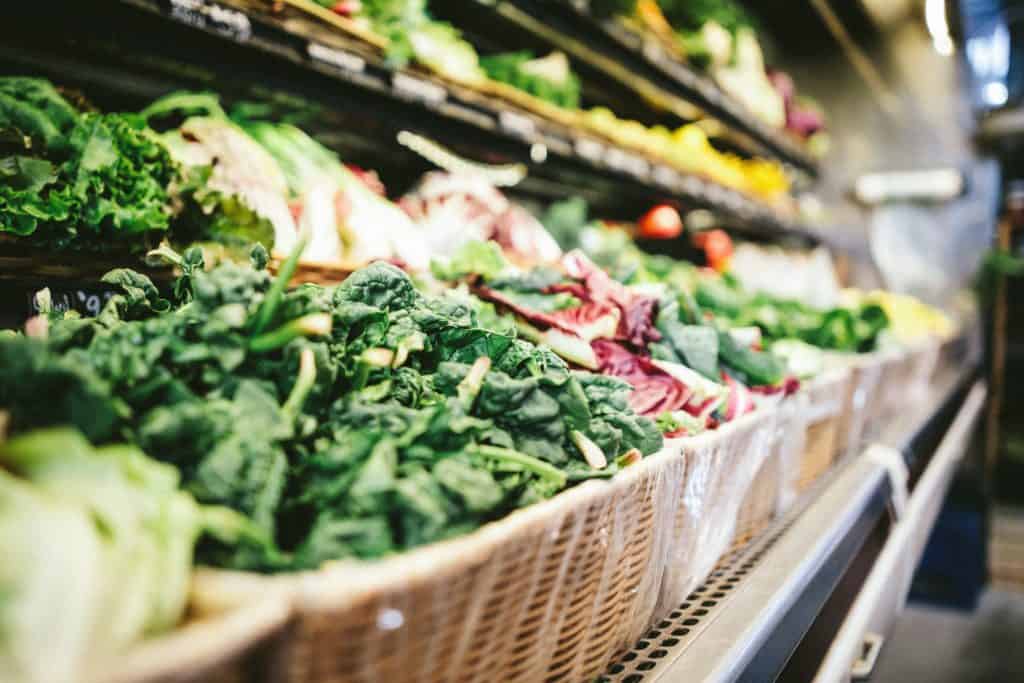
Option #2: $100 per person, per month
A very easy option for creating your grocery budget is to allocate $100 per person, per month.
That means if there are 5 people in your household, your new food budget is $500 a month.
Divide that monthly number by 4 to get your weekly grocery budget. Using the example above, $500/4 = $125 a week for groceries.
Note: Your monthly budget should be at least $200, even for a household of 1 or 2.
Option #3: 10% of your monthly income
Another painless way to determine what your grocery budget should be is to take 10% of your monthly income.
Be sure to use your take home pay for this.
If you live in an especially high cost-of-living area, you could stretch it to 12-15%. And if have a high income, it’s okay not to use the whole 10%.
Here’s how it works:
Let’s say your monthly household take home pay is $4,000.
$4,000 x 10% = $400 per month on groceries
In case you’re curious, here’s what the USDA recommends for grocery budgets. Check out your family size on the chart, and you can see food budgets for 4 different plans: Thrifty, Low-cost, Moderate, and Liberal.
Compare your new grocery budget to those plans. If you’re randomly and unnecessarily competitive (like me), try to beat the thrifty or low-cost plan.
See? That budget-creation process wasn’t so bad, was it?
By using one of these easy grocery budgeting strategies, you can create your food spending plan in no time.
Now for sticking to it!

How can I stretch my grocery budget?
Creating your grocery budget is only the first part the equation. Sticking to it is the next.
Here are some tips for stretching your grocery budget.
1. Shop the sales
Hands down, the singular best way to save money on groceries is to buy what’s on sale. Each week, your grocery store has what are called ‘loss leaders.’
They are highly discounted items that the store often takes a loss on. Why would they do that?
Because they hope you’ll come in and buy a ton of full-priced items too.
If you can create your meal plan and shopping list based on what’s on sale, you’ll achieve massive savings.
2. Sign up for your store’s loyalty program
Be sure to sign up for your store’s loyalty program or discount card if applicable. For instance, at Kroger and its affiliates, you will only receive the sale prices if you have their free card scanned at checkout.
Many stores also offer digital coupons through their loyalty programs. You can ‘clip’ these coupons online or on their app. Then when you scan your card at the register, it takes the coupons off automatically.
That way there’s no having to clip and keep track of paper coupons!
You can ask your cashier or stop at the customer service desk to find out how to sign up for your store’s discount card.

3. Try generic or store brands
Generic and store brand items are often as good, if not better, than the name brands you’re used to.
Often they’re even made by the name brand companies, but sold without the high-cost packaging and marketing budget. You reap all the savings.
If you have an Aldi in your area, I highly recommend trying it. Even if you don’t do all of your grocery shopping there, you could stop in once a month to stock up on pantry staples and paper products.
You’ll probably be shocked by how much you will save.
Related: The 70 Best Things to Buy at Aldi
4. Use rebate apps
My favorite rebate app is Ibotta. I get money back on almost every shopping trip.
Once you have signed up for Ibotta, scroll through the offers, and add the ones you plan to use. They have rebates on tons of brand name items, plus ‘Any Brand’ offers on staples such as fruit, bread, milk, and eggs.
After you’ve done your grocery shopping, submit your receipt through the Ibotta app. It’ll use your phone camera to take a picture of the receipt and send it in to be approved. The money is added to your account within a couple hours.
The best part is that it’s actual money, not mystery points like some other apps. I’ve gotten over $350 back from Ibotta over the past couple years. You can also use your rebates toward gift cards to TONS of retailers.
Right now Ibotta is offering a $20 welcome bonus through this link. Signing up on the app instead? Use code uwhaflc to get your $20 bonus.

5. Meal plan
Planning your meals actually makes grocery shopping way easier. By taking 10-15 minutes a week to jot down what your household will be eating this week, you’ll take the stress out of what to buy. And when you’ll eat it.
It also takes the craziness out of that 5:30 pm what-the-heck-am-I-going-to-make time frame.
Please don’t think that meal planning is complicated. Or that you have to be a gourmet chef to pull it off.
Just like your grocery budget is a plan for your money, a meal plan is a blueprint for what you’ll eat and buy.
Helpful meal planning resources:
- How to Get Started Meal Planning: 10 Super Easy Tricks
- 5 Easy Meal Planning Strategies for Beginners
- How to Make a Cheap Grocery List (+10 Money Saving Tricks!)
In conclusion
Hopefully you realize now that creating and sticking to a grocery budget isn’t as difficult as it sounds.
Using one of these 3 strategies will make it easy to determine what your grocery budget should be. And following the money saving tips above should help you stay within your new budget.
If you haven’t already, be sure to download the free grocery budget worksheet printable. It walks you through the steps of exactly how to create a grocery budget.
Keep it in a place where you can refer back to it. A budget is never set in stone, so feel free to adapt it as time goes on, to be sure that it works best for you.
Cheers to giving less money to the grocery store!
P.S. Need lots more help in the money management arena? Check out these super helpful resources:
